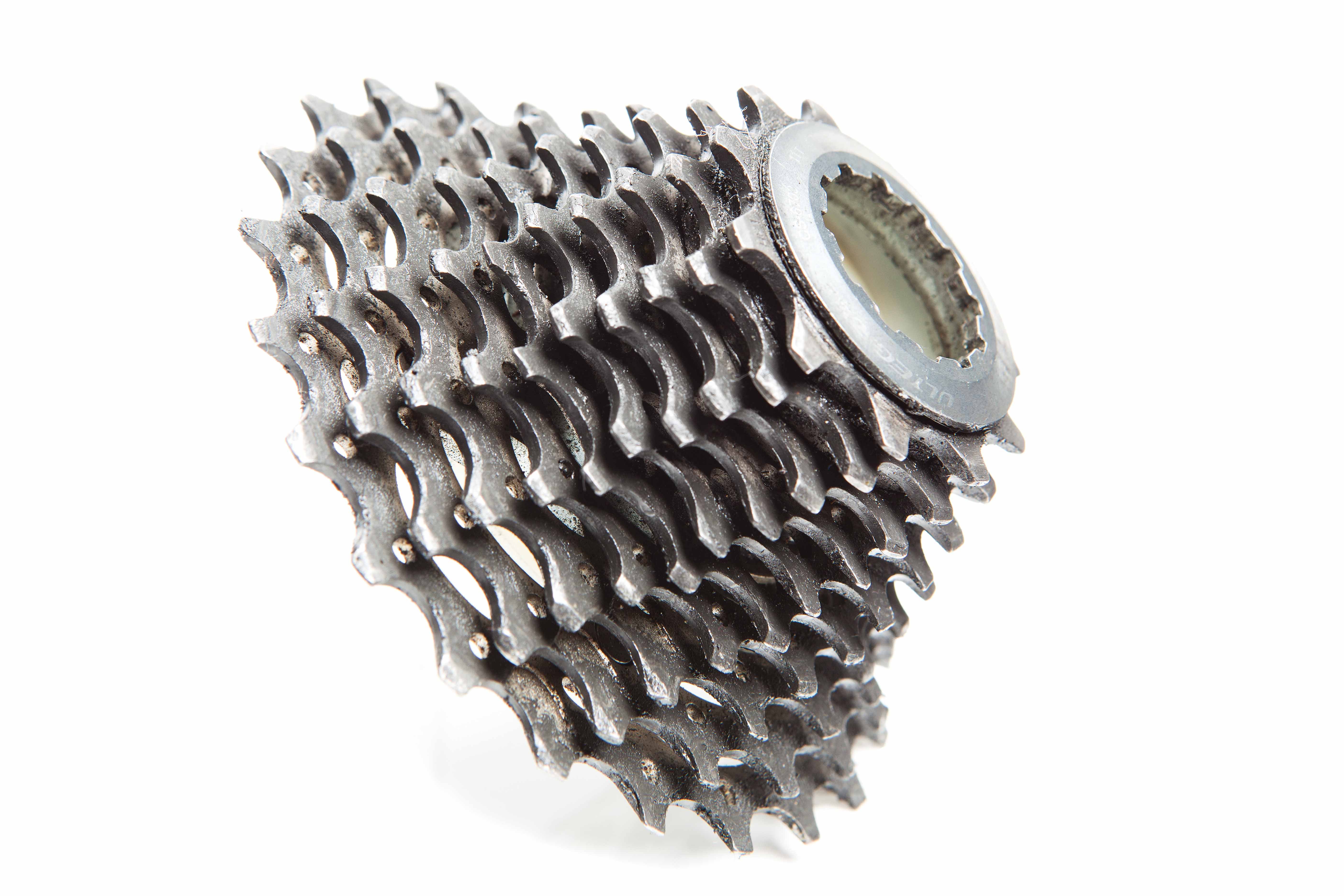When To Replace Your Chain And Cassette

Photo: John David Becker
A quick guide to replacing your bike’s critical components.
There are many variables that contribute to chain wear: Your riding style, weight, terrain and gear selections all influence how fast your chain will wear out. The best way to know when to replace your chain is to use a chain wear tool like the Park Tool CC-2C Chain Checker ($30, Parktool.com).
If you don’t want to spend cash on a chain checker, you can go low tech by using a tape measurer. Shift into the big ring and line up the end of the tape measurer with a link near the rear derailleur. Measure out one foot and note where the closest chain pin falls on the tape measurer. If the pin is less than one-sixteenth of an inch from the 12-inch mark, your chain still has life, but if the pin is more than one-sixteenth of an inch past the 12-inch mark, it’s time to replace your chain.
Determining when to replace your cassette isn’t as easy because there isn’t an accurate way to measure wear. The biggest indication of a worn-out cassette is if a new chain skips when you’re pedaling hard. You can examine your cassette by looking at the shape of the teeth. If the trailing edge of a tooth is flattened at the top or you can easily spot excessive wear on a particular cog that doesn’t match the rest of the cassette, it’s most likely time for a new set of cogs.
Chains and cassettes wear together, so if you want to play it safe, replace both at the same time to revitalize your drivetrain.